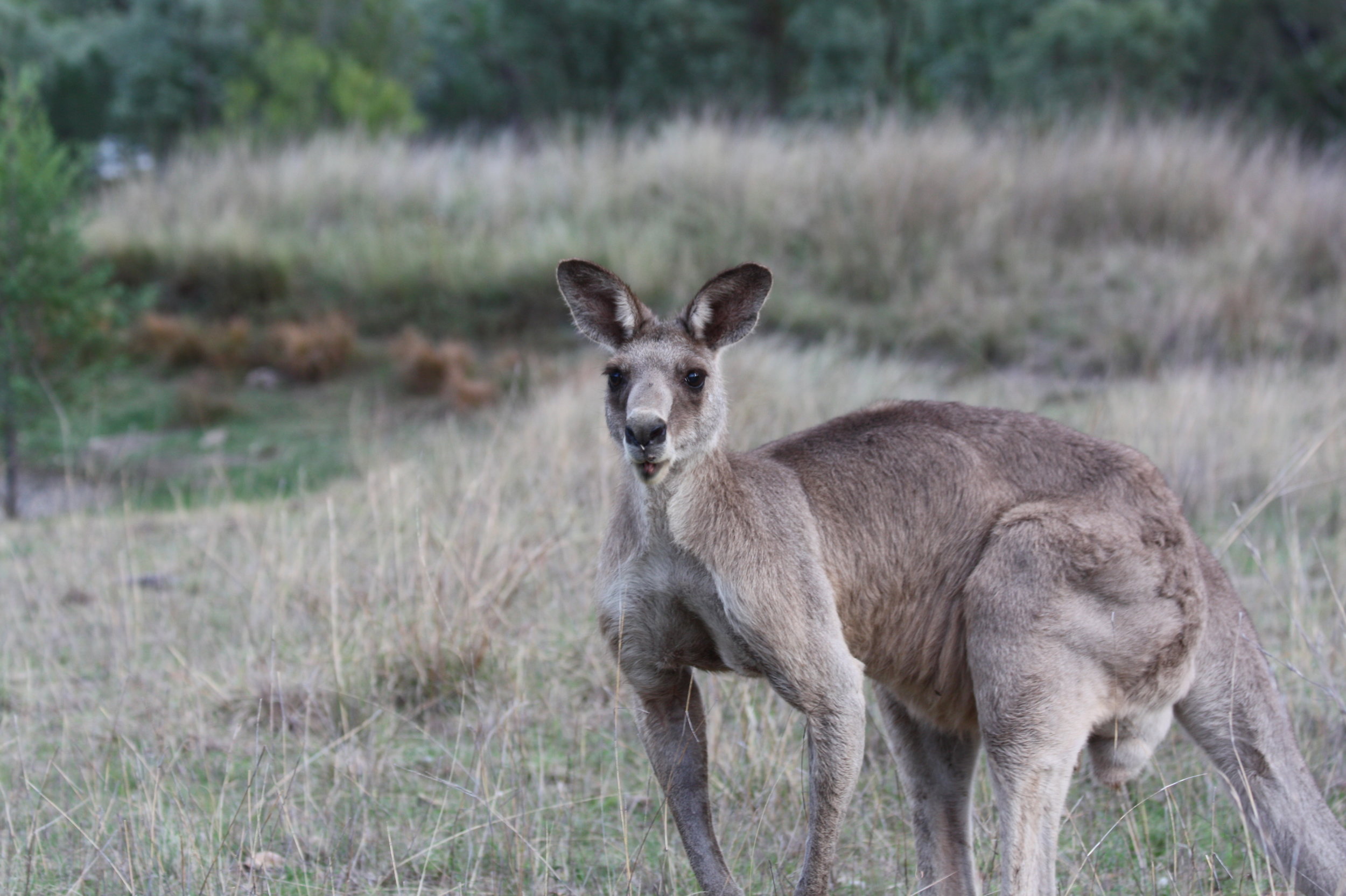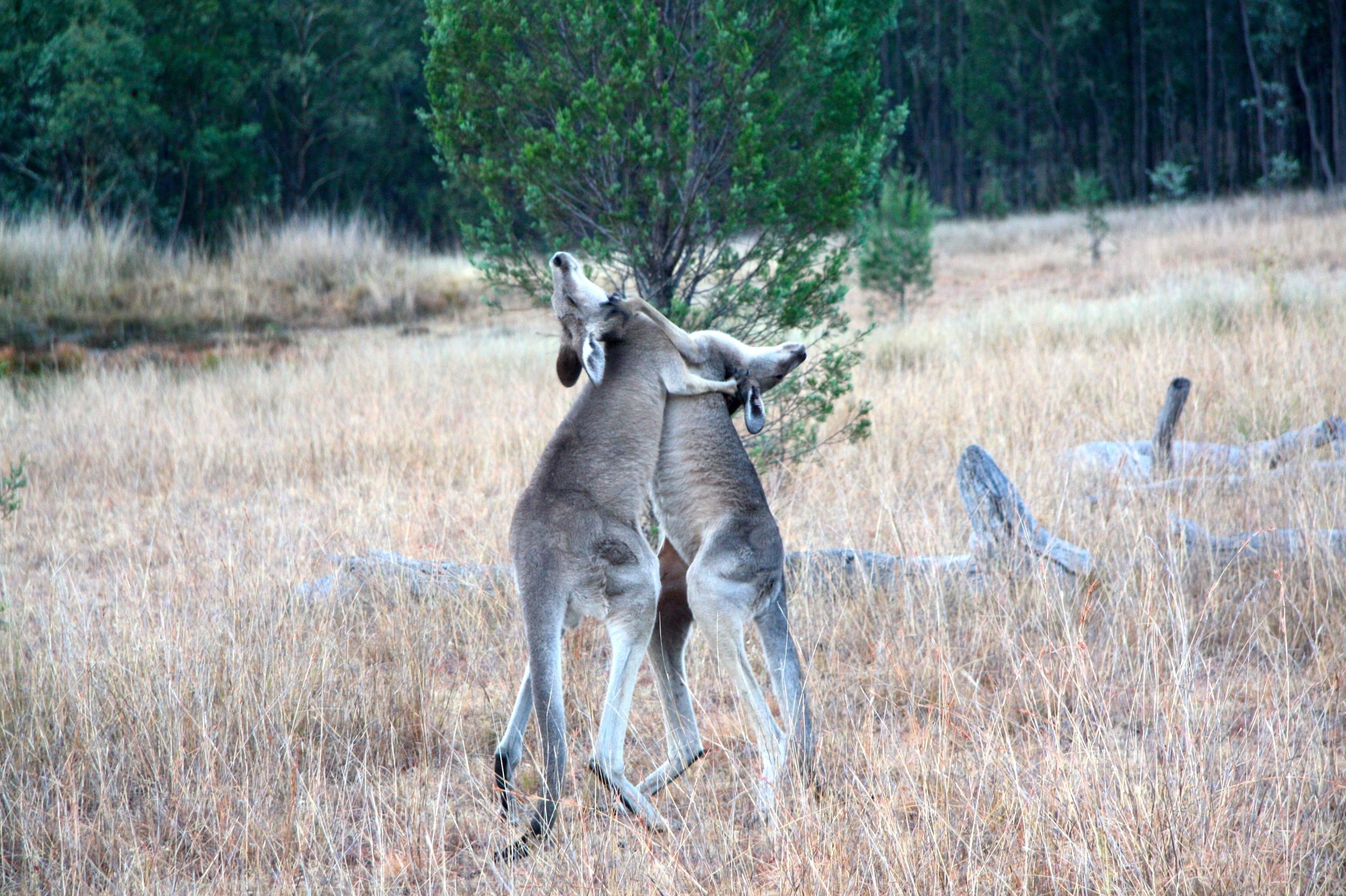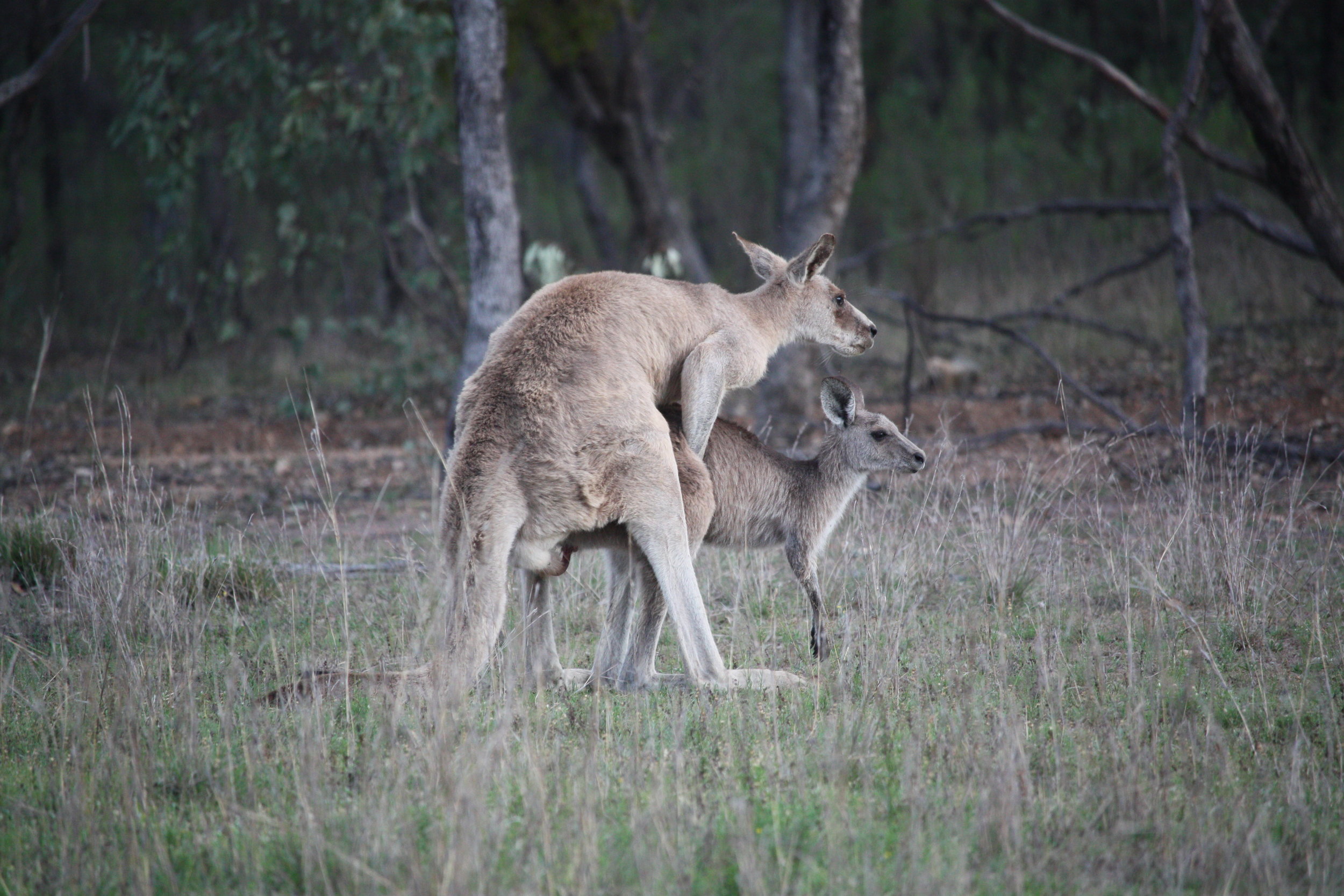After spending months getting to know a group of eastern grey kangaroos, Paloma Corvalan finds that the most dominant males do not necessarily have all the success.
Illustration by Leigh Douglas
Ethograms is a monthly column published in collaboration with the Australasian Society for the Study of Animal Behaviour (ASSAB), showcasing the work of early-career researchers. Amy LeBlanc is a master's student at the University of Melbourne, and an outreach officer for ASSAB.
It has been a hot day in Queensland’s Sundown National Park, but the sun is finally starting to set. From out of the trees, a mob of kangaroos appear, taking advantage of the cooling temperatures. The females begin to forage in the paddock, munching away at the dry grass as their young emerge from their pouches and begin to bounce around. The burly males keep a wary eye on both each other and the trees, watching for potential threats.
This is a quintessentially Australian scene — the only thing separating it from thousands of other paddocks around the country is the scientist who is slowly approaching the group. She watches the kangaroos silently, studying their behaviour as they forage in the gathering dusk. She knows all the 250 kangaroos in this group by name: She has stood here watching them many times before and recognises them by their individual facial features. Her eyes track the large males as they move among the females, noting whom they spend time with. For Paloma Corvalan, getting to know kangaroos is her passion.
Corvalan, a PhD student at the University of Queensland, has been studying the social behaviour of male eastern grey kangaroos since 2013. She chose this project because it perfectly integrates her two areas of interest — ecology and psychology — and allows her to spend time in the field. She is trying to understand sociability in male kangaroos, specifically how it links to their dominance and reproductive success.
University of Queensland researcher Paloma Corvalan with male kangaroo Tim, who is sniffing a female. © Natalie Freeman
Kangaroos are very social creatures, always found in large mobs. However, unlike other social creatures, kangaroos don’t interact with each other in directly helpful ways. “That is one of the reasons studying their social bonds is so interesting, as there is no evidence of direct benefits gained from being sociable,” says Corvalan. “They do not groom each other, cooperate, nor take care of each other’s young.”
This makes studying the social bonds between kangaroos challenging. Unlike chimpanzees or monkeys, where social bonds are measured by the time individuals spend grooming each other, the kangaroos’ relationships are measured by their association network.
Basically, taking into account random assortment and spatial overlap, Corvalan figures out which kangaroos spend more time foraging with each other than would be predicted by random chance. To do this, she must spend hours upon hours observing the kangaroos, noting who forages together. This is made even more difficult by the lack of tags or artificial markings on the individuals. Corvalan identifies her kangaroos by their facial features, a familiarity that took about eight months to learn. With over 250 kangaroos at her field site, this was no mean feat.
So far, Corvalan’s research has turned up some interesting results: “During my preliminary analyses, I was surprised to find that the most dominant male did not sire the most offspring,” she says. “Instead, the paternity analysis assigned the most offspring to a less dominant, more sociable male.”
This sociable male, named Tim, may be outcompeting the larger alpha male, Chad, by being more approachable and less threatening to the females of the group. Another explanation is that Tim is simply more likely to be around when females are in oestrous — the period when they are fertile and receptive to male advances — and therefore has a greater chance of mating with them. Corvalan is currently genotyping more offspring from around the field site to see whether this result is indicative of a real trend, or just an oddity.




So far, Corvalan has found no specific association between a male’s sociability and his hormone levels, specifically corticosterone and testosterone. More dominant males in the group do seem to have higher levels of testosterone, says Corvalan, although she is now carrying out further analyses to confirm these results.
Corvalan’s aspiration is that, once published, her group's open access data could be used to examine differences between social species, particularly in the formation and durability of social relationships. This in turn would help shed light on the evolutionary origins of social bonds. “I hope my research will help in our understanding of the dynamics of animal social networks and the fitness trade-offs of sociability in mammals,” she says.
Why sociality evolved is a fascinating topic. As social creatures ourselves, humans have a lot to learn from animals such as Paloma’s kangaroos. By examining bonds and relationships in non-human creatures, we may uncover the origins of sociality and its development, teaching us much about ourselves in the process.
Edited by Andrew Katsis and Ellie Michaelides































































